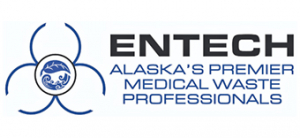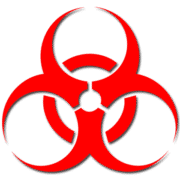In 2016, the universal biohazard symbol that is used to visually communicate the presence of known and potentially infectious biological material celebrated its 50th birthday. According to The New York Times, the universal biohazard symbol was developed by Charles L. Baldwin, an Environmental Health Engineer, of Dow Chemicals in 1966. Still in use today and largely unchanged from its original design, the universal biohazard symbol is the primary identifier for all classifications of regulated medical wastes (RMW) which are generally and sometimes specifically referenced as biomedical wastes, biohazardous waste, regulated medical waste, other potentially infectious materials (OPIM), or through its formal United Nations classification as UN 3291.
In describing the process of developing the symbol, Mr. Baldwin remarked:
“‘We tested the sample symbols across the country — the marketing department had survey groups to test different labels for Dow products. There were half a dozen of our original symbols in this survey of 24 different symbols. The rest were recognizable, like the peanut man for Planter’s peanuts, the Texaco star, the Shell Oil symbol, the Red Cross and the swastika. They were asked to look at them and then asked to guess at what each one meant. The biohazard symbol got the fewest guesses. Then we went back one week later to the same set of people and the same set of symbols, plus 36 more common ones, and asked them which of these did they remember the best. And they picked out the biohazard symbol.”
Interestingly enough, the symbol is well suited for Alaska’s unique environment as he continued to describe the design process:
“The color was blaze orange, one of the colors chosen in Arctic exploration as being the most visible under the most conditions. It was three-sided because if it were on a box containing biohazardous material and the box was moved around, transported, it might wind up in different positions.”
After the symbol was originally published, it was immediately adopted by numerous agencies involved with this particular waste stream including US Center for Disease Control (CDC), the Occupational Safety and Health Administration (OSHA) and the National Institutes of Health (NIH).
A technical diagram of the universal biohazard symbol from the NIH Laboratory Safety Monograph published in 1978 can be found below.




